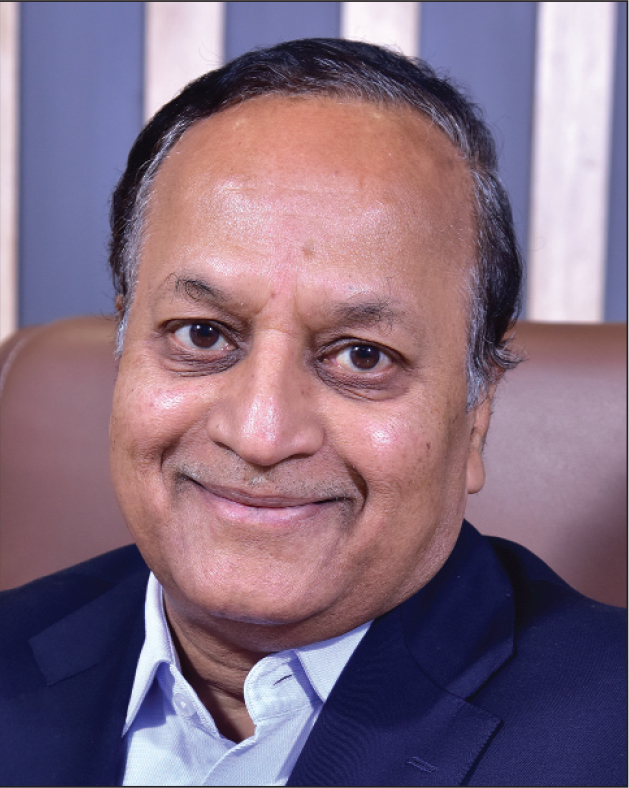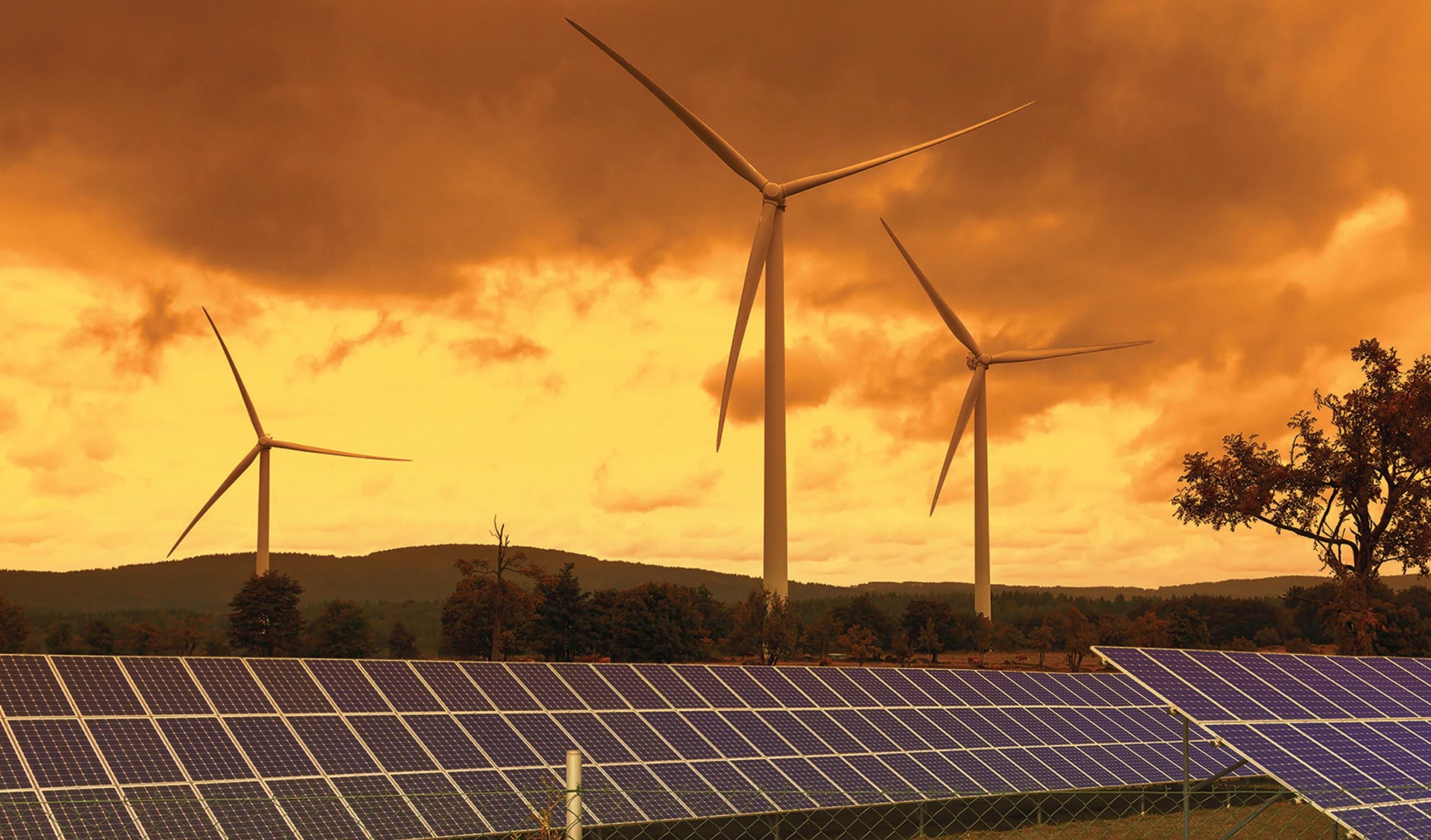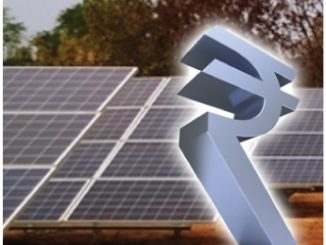
Established in 2012, Hero Future Energies (HFE) is one of the leading players in the renewable energy sector. Currently, the company has a portfolio of 1.5 GW of wind and solar power capacity in India, and an additional 1 GW under construction and pipeline. Globally, the company has developed a pipeline of approximately 500 MW of large-scale grid-connected solar projects across Europe and Asia (including Bangladesh, Singapore, Vietnam, the Philippines and Indonesia). It has a target of reaching 5 GW of installed and operating capacity by 2024. In an interview with Renewable Watch, Sunil Jain, chief executive officer, HFE, shares the story of renewables in the past decade, the biggest disappointments, and the changing industry structure over the years. He also talks about the company’s experience in the sector, the current challenges, upcoming technologies and outlook for the power sector over the next decade. Excerpts…
How has the renewable energy sector fared in the past 10 years?
The renewable energy sector was at a very nascent stage when I joined. Most of the projects were below the 1 MW scale. A 10-20 MW project would be big news till 2010. Post-2010, there was a greater focus on the renewable energy sector. Before 2010, the Indian government had launched the National Action Plan for Climate Change. In 2010, the Jawaharlal Nehru National Solar Mission was launched, which gave a good fillip to the solar energy sector by setting up a 20 GW plan for the solar utility-scale sector. The people in the industry, including me, scoffed at this plan and thought that it would not be possible. Another big boost to the solar sector came from the Gujarat government when it announced the 1 GW solar plan at a tariff of Rs 15 per unit. This made the industry realise that working on a gigawatt scale is possible in the renewable energy sector. After this bid, there were other bids in states including Punjab and Rajasthan, but the pace of growth in the solar sector remained slow. The primary reason was that the wind sector was very attractive, due to tax incentives such as accelerated depreciation. Meanwhile, the hydropower sector was growing at its usual pace with issues related to project and clearance delays. Unfortunately, in the biomass sector, the policy and legal issues with farmers remained. This was a key reason for many bioenergy projects becoming non-performing assets (NPAs).
Slowly, post-2010, the industry started to realise that there are business opportunities apart from tax incentives for independent power producers (IPPs). This was a paradigm shift in the renewable energy sector. While the wind sector grew well with the help of feed-in tariffs, by around 2013, less than 10 GW of solar projects had been set up and the 20 GW solar plan seemed unviable. The outlook of the sector changed when the present government announced the 175 GW renewable energy target. This commitment attracted a lot of players in the sector. The target also attracted a huge corpus of foreign capital, which made the industry viable.
Later, the introduction of reverse auctions was an inflection point, which changed the thinking of the industry. The idea was to make the renewable energy sector more competitive and drive its growth without subsidies. Slowly, the renewable energy sector started to compete with the thermal power sector. This made the 100 GW solar target (within 175 GW) seem achievable. Though the country may not be able to achieve the 40 GW rooftop solar target (within 100 GW) by 2022, the balance will be covered by grid-connected utility-scale projects. In total, by including hydropower capacity as well, this 175 GW target seems achievable. Currently, around 90 GW of wind and solar capacity is operational and another 30 GW is under implementation. If around 36 GW of hydropower capacity is added, the entire industry would be so close to the target. This, in itself, is no small achievement. We have witnessed a reduction in solar tariffs from approximately Rs 18 per unit to Rs 2 per unit in over a decade. Till 2014, wind tariffs used to hover at Rs 5 per unit with a plant load factor (PLF) of 23-24 per cent. Today, in less than a decade, wind tariffs have fallen to around Rs 2.50 per unit and PLFs have almost doubled.
People said that this is not sustainable and that the industry would collapse, but that did not happen. In fact, the sector created jobs and, according to a back-of-the-nvelope calculation, attracted over Rs 3.6 trillion of investments in a decade. Also, I am proud to say that no renewable energy project has been declared an NPA in the past decade.
“In the past 10 years, the policy documents have changed way too frequently for the comfort of investors.”
What were the biggest disappointments in the past 10 years?
In the past 10 years, government policies and regulations have changed way too frequently for the comfort of investors. Due to this, some projects have been delayed beyond a reasonable period. The industry always prefers a long-term policy horizon. Uncertainty regarding GST, safeguard duty, customs duties and domestic manufacturing have been the other big disappointments. The curtailment of electricity in some states and tariff renegotiations by some utilities are also serious challenges. I would like to highlight that the regulators have been slow to adapt to the changing power sector dynamics. Almost two decades old, the Electricity Act is now being revamped. The country also missed the domestic manufacturing opportunity. A scheme like Atmanirbhar should have been brought in 10 years back. This would have given India an edge over China.
Meanwhile, a key issue is that in the past five years, power demand has either stagnated or fallen. Earlier, a 1 per cent increase in GDP used to increase power demand by 1.1 per cent. Now, with low power demand, energy efficiency and the Indian economy becoming service oriented rather than manufacturing oriented, a 1 per cent increase in GDP increases power demand by just around 0.75 per cent. This is a huge setback for the industry as the lack of growth in power demand will impact the growth of renewables. To reach the target of 450 GW of renewables by 2030, it is important for power demand to reach 900 GW as half of this will be met by fossil fuels.
What are the fundamental issues with the distribution companies?
Unless consumers start paying for the actual cost of power, the bailout packages for discoms will keep coming, and we will keep on sinking good money after bad money. In the current situation, with cross-subsidy surcharges, we are robbing Peter to pay Paul. The industrial users are paying through their noses and are becoming uncompetitive, while in the guise of free power, a lot of power is stolen. Even after reforms, the AT&C losses are still over 29 per cent as against the world average of 9-10 per cent.
The fundamental issue with the distribution companies is that most utilities are owned by the government. I believe the amendments to the Electricity Act are in the right direction. Gradually, the utilities should be privatised through a balanced approach. The use of technology to reduce thefts for demand- and supply-side management, solarisation of pumps in rural areas and adoption of the franchise model are some solutions to the woes of the discoms.
“In the current situation, with cross-subsidy surcharges, we are robbing Peter to pay Paul. Industrial users are paying through their noses and are becoming uncompetitive, while in the guise of free power, a lot of power is being stolen.”
What were the issues faced by HFE when it entered the renewable energy market?
Established in 2012, HFE entered the renewable energy market at the right time when the focus on renewables strengthened with the new government coming to power. This accelerated the growth of our portfolio. The key reason for our growth was that our diligence process for projects improved dramatically. We relied less on wind turbine manufacturers for their studies because we knew there were gaps. Also, we were conservative with our bidding, and we won most of our solar projects at the highest tariffs. In terms of mistakes, in one case, we had done due diligence of land in Karnataka, but did not factor in the political pitfalls of local areas and archaic land conversion policies.
Through the years, how has the industry structure changed?
One, there has been an increase in the scale of projects. Two, the bidding process is no more state oriented. Three, the transition from concept to commissioning to the emergence of IPPs helped in reducing costs. All IPPs virtually became mini-EPC companies.
What has been HFE’s experience with emerging technologies through the years?
HFE became the first company to undertake a large-scale wind-solar hybrid project (a 28.8 MW solar PV plant was built near an existing 50 MW wind farm in Karnataka). Hybrids have good potential as they enable the optimum utilisation of the evacuation infrastructure for intermittent renewable energy, which benefits the utilities. Hybrids also increase the project PLFs and vacant land is put to use. They also give the wind sector a second opportunity to be a part of the renewable energy sector. Going forward, I believe that the model of hybrids where solar and wind projects will be located in different locations is not promising because it defeats the purpose of evacuation of electricity at the same grid location. With the inclusion of storage technologies, we will move from hybrids to tribids and provide stable round-the-clock renewable energy.
 What are your thoughts on green hydrogen?
What are your thoughts on green hydrogen?
Some European countries and Japan are promoting green hydrogen, but the technology is still not mature and is expensive. No doubt the technology is promising, but there are some issues with safety. The sector is a decade away for commercial applicability to bring down the prices. Also, the technology will have to compete with solar and wind going forward. When green hydrogen matures, say, by 2030, it will have to compete with solar at Re 1 per unit.
Will solar tariff reach Re 1 per unit by 2030 according to you?
Yes, definitely. In fact, it will probably reach Re 1 before 2030. Efficiency gains in solar technology are moving fast. Going forward, falling interest costs will further help the economics of renewables.
What is the short-term impact of Covid-19 on the power sector and when are we likely to overcome that?
The renewable energy sector has not been impacted much by Covid-19. There was a drop in power demand for two to three months but there was no curtailment of renewable energy because of its must-run status. On the other hand, the thermal sector was adversely impacted, which had an indirect impact on renewables with respect to financing as banks have significant exposure in the thermal power sector. The project delays were a challenge. Currently, the supply chain and availability of modules are serious challenges. On the positive side, the use of technology has helped mitigate the challenges posed by the pandemic.
How will the power sector evolve over the next decade?
I envisage big-ticket reforms in the power sector in the next three to four years in terms of regulatory changes, amendments to the Electricity Act and more privatisation. All these reforms will prove to be healthy for the entire power sector. The biggest game changer for the next decade will be technology, which will assist renewables in becoming a firm round-the-clock source of power. Technology will not only make forecasting and scheduling more accurate, but will also make the utilities more efficient by helping with remote monitoring and setting up of smart meters and smart grids. All in all, the efficiency gains will be massive in the entire power supply chain, from generation to distribution. In addition, e-mobility will be a game changer for the entire power sector and renewables as it will increase power demand.
For HFE, the deployment of storage technologies and expansion to international markets, particularly in the Southeast and South Asian countries, will be the key focus areas in the next decade.



